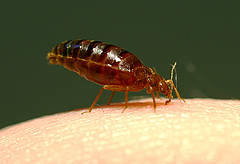Invertebrate immune systems are anything but simple, conference finds
A hundred years since Russian microbiologist Elie Metschnikow first discovered the invertebrate immune system, scientists are only just beginning to understand its complexity. Presenting their findings at a recent European Science Foundation (ESF) conference, scientists showed that invertebrates have evolved elaborate ways to fight disease.
By studying starfish, Metschnikow was the first to see cells digesting bacteria, a process he called phagocytosis (the eating of cells by other cells). Phagocytosis, it turns out, is an important immune defence in all living things. Since Metschnikow’s work, scientists have studied the immune systems of simpler organisms (such as invertebrates) in the hope of understanding the immune systems of more complex organisms, like us.
However, invertebrates’ immune systems are more elaborate than we expected. “We have underestimated the complexity of invertebrate immunity,” says Dr. Paul Schmid-Hempel, an evolutionary ecologist at the ETH Zurich in Switzerland. By studying the immune systems of fruit flies, mosquitoes and other invertebrates (including bed bugs, moths, crustaceans, worms, sponges and bees), scientists are finding new molecules involved in defences against pathogens (microbes that cause disease).
One molecule found in fruit flies, Dscam, is capable of folding itself in 18,000 different ways. Computer models that predict the structure of this molecule have led scientists to suggest that this folding creates different shapes, each capable of binding to different structures on the pathogen’s surface. “These molecules can be used very flexibly by assembling their components in many ways,” says Schmid-Hempel. Until now, this ability to recognize specific pathogens was thought to be limited to vertebrates.
In another exciting area of research, scientists showed the sophisticated ways that invertebrates manage their immune systems. “Insects recognise peptidoglycan [a component of bacterial cell wall] and this triggers a rapid immune response” explains Schmid-Hempel. However, once the bacteria have been killed, molecules digest peptidoglycans and therefore dampen down the immune response. Regulating the immune response in this way is important because immune systems, if left unchecked, can harm an individual by mistakenly attacking cells in the body.
In humans, the failure of the body to recognise itself results in autoimmune diseases. For example, Crohn’s disease is the failure of the body to recognize intestinal cells, resulting in an immune response against these cells. Understanding these autoimmune processes in invertebrates might help us to better engineer drugs to tackle these debilitating diseases in humans.
Insects can also boost their immune systems ready for a pathogen invasion. Female bedbugs, which are often wounded during mating, enhance their immune system prior to mating in anticipation of pathogen invasion. Similarly, bumblebees maintain their immune systems in an enhanced state following a pathogen attack to counter future infections. “This can even cross generations, with mothers transferring immunity to their offspring” says Schmid-Hempel. This delicate management of immune responses has until now been regarded as a characteristic of vertebrates.
Schmid-Hempel thinks that the molecular mechanisms found in invertebrate immune systems may rival those seen in the vertebrate world. He says: “Insects use different cells and molecules, but follow very similar principles for detecting pathogens as vertebrates.”
And scientists are only beginning to understand the elaborate ways that invertebrates respond to pathogens. As they discover new molecules, the invertebrate immune system could turn out to be much more like that of vertebrates — making it an even better model for the study of our own immune system.
The impact on innate immunity: at the defence frontier – the biology of innate immunity conference was organised by the ESF Research Conferences Scheme and was attended by 90 immunologists and evolutionary ecologists. It was held at the University of Innsbruck Conference Centre in Obergurgl, Ötz Valley, Austria on 19-24 May 2007. The conference appealed to an international audience, drawing scientists from mainland Europe (Kenneth Söderhäll, Uppsala University, Sweden), Britain (Andrew Read, University of Edinburgh, Scotland), and the Canada (Shelley Adamo, Dalhousie University, Nova Scotia, CA). This conference was organised by ESF in partnership with the Fonds zur Förderung der wissenschaftlichen Forschung in Österreich (FWF) and the Leopold-Franzens-Universität Innsbruck (LFUI).
For more information about the ESF Research Conferences please go to www.esf.org/activities/esf-conferences.html
Media contact:
- Professor Paul Schmid-HempelE-Mail


